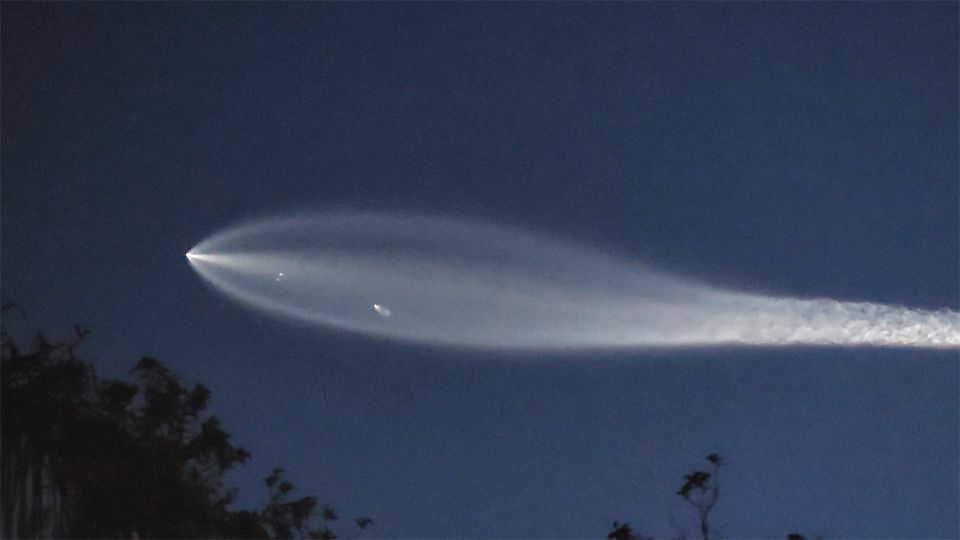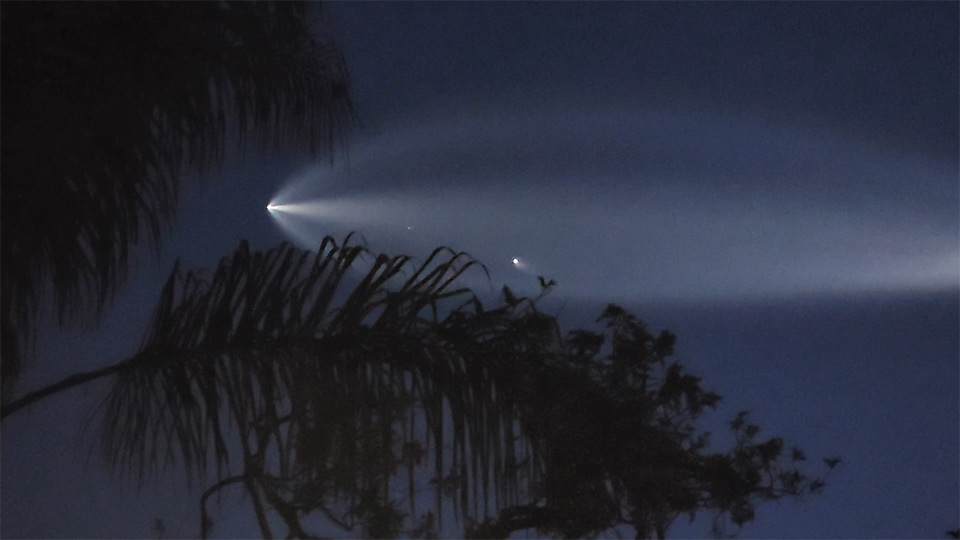 |
Venus inferior conjunction
3/22/25 3:21 PM local
22:21 UTC
1% illuminated
8 degrees 25 minutes from the sun
|
when you see a really really bright star in the early evening it's probably venus.and when you see a really bright star in the early morning it's probably...venus.
every 19.5 months (approximately) venus laps earth,
passing between the earth and the sun,
usually just missing the sun,
switching from the evening to the morning star.
this event is called the inferior conjunction of venus (with the sun), the superior conjunction occurring on the far side.
the cool thing about the inferior conjunction is that the crescent is a thin as it can possibly get. if the separation from the sun is small enough, the crescent may even go more than half way around the disk due to atmospheric refraction*
this gives rise to a stupid venus trick:
observe (or photograph) venus in the middle of the day when it is as close to the sun as possible. needless to say, this is DANGEROUS. one glimpse at the sun through a high power telescope is likely to fry your retina, melt optics, or possibly explode telescopes. so one needs to be very careful.
the inferior conjunction before last was hampered by clouds. i caught a quick visual glimpse, but didn't have time for an image.
last time it was hot, sunny and very windy. my goto wasn't working well and a lens cap blew off while i was centering on the sun, causing an unplanned modification of my finder scope, leading me to abandon the attempt:
 |
hole burnt in finder-scope lens cap
it's actually pretty handy |
this time i caught it (above), though sadly, i did not catch a more circumferential crescent. venus transits (crossings directly across the face of the sun) are extremely rare, the last was in 2012, and next will be 2117. and yes venus is retrograde when this occurs for you astrologers.
i was fortunate enough to catch the rare 2012 transit with a brand new solar telescope:
 |
venus transit
6/5/2012 |
*i think
more on venus inferior conjunctions:
https://earthsky.org/astronomy-essentials/superb-venus-inferior-conjunction/
https://earthsky.org/astronomy-essentials/inferior-conjunction-venus-between-sun-and-earth/
https://skyandtelescope.org/astronomy-news/venus-sprints-from-evening-star-to-morning-star/
image details:
ZWO ASI290MM
Baader 685 nm IR pass filter
celestron 11" Edge HD, no barlow
East Bluff, CA
2025-03-22 22:21.2 UTC
180 second capture
Shutter=0.069ms
Gain=306 (51%)
Histogramm=80%
FPS (avg.)=289
captured with firecapture
stacked in autostakkert
processed in registax and photoshop
used neither ADC nor barlow
processing was difficult as faint passing clouds led to variation in image brightness, making it difficult for stacking software to pick out the low contrast crescent against the very bright sky. only one capture could be aligned.
colorized background to natural sky in photoshop















































